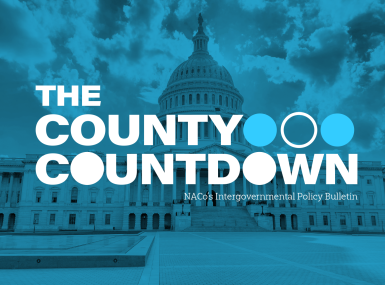Fully Fund the Older Americans Act (OAA)

Author

Julia Cortina
Upcoming Events
Related News
ACTION NEEDED
Urge your Members of Congress to reauthorize the Older Americans Act (OAA) with substantial funding increases to help counties meet the growing needs of older and disabled adult residents.
BACKGROUND
The Older Americans Act (OAA) supports activities that help older adults live independently and remain part of the community. The U.S. Department of Health and Human Services Administration on Aging (AOA) under the Administration for Community Living (ACL) administers most OAA programs, though the U.S. Department of Labor oversees funding to support part- time employment opportunities and community service activities for seniors.
The majority of OAA programs are Title lll “core services” authorized by Title III— that vary depending on local needs, but often include transportation, nutrition, support for caregivers, recreation, in- home assistance, disease prevention and more. The OAA also authorizes funding for training, research and demonstration projects in the field of aging as well as grants for services for Native Americans and elder rights activities.
States receive Title III Grants according to a formula based on their share of the nation's population of individuals 60 and older. States then pass these funds to Area Agencies on Aging (AAAs), public or private non-profit agencies which coordinate programs and services for senior citizens at the local level. Counties are key recipients of these dollars and frequent administrators of these programs.
Roughly 31 percent of the 614 AAAs across the nation operate within county governments, while another 23 percent operate within regional planning councils or councils of governments that often include counties. Meanwhile, 55 percent of AAAs rely on local funding streams through counties or other local governments to provide additional programs and services.
As the nation’s population rapidly ages, counties face increasing demand and challenges in providing comprehensive systems of care to their older residents. Federal funding for OAA programs has not kept pace with these demographic changes. Without additional resources, counties will face new challenges in providing the rapidly aging population with access to critical services.
The OAA was last reauthorized under the Supporting Older Americans Act of 2020 (SOAA) through FY 2024 and has since been funded through Continuing Resolutions as part of the annual appropriations process. While the SOAA included annual increases in the authorized funding level for core services programs, this funding is discretionary and subject to the annual appropriations process. As a result, Congress has not provided full funding for OAA through regular appropriations. In FY 2024/2025, OAA programs received $2.372 billion in funding, $392 million less than authorized levels. Despite negotiations that resulted in a unanimous vote in the U.S. Senate to reauthorize and make improvements to OAA in December 2024, the bill ultimately failed to pass the House.
As Congress considers reauthorization of the OAA, counties urge additional funding for the development of state and local aging plans, dedicated investments in increased wages, pipelines, incentives and research to stabilize and strengthen the aging network workforce and increased funding for nonmedical assistance for individuals with disabilities. In March 2024, NACo provided comments to the U.S. Senate Health, Education, Labor and Pensions (HELP) Special Committee on Aging regarding these priorities.
KEY TALKING POINTS
- By 2035, for the first time in our nation’s history, the population of adults 65 and older will outnumber
children younger than 18, significantly increasing the demand for aging services. - Approximately 31 percent of the 614 area agencies on aging across the nation operate within county governments while another 23 percent operate within regional planning councils or councils of governments that often include counties.
- 55 percent of area agencies on aging rely on local funding streams – including from counties – to provide additional programs and services.
- Congress must reauthorize and directly appropriate higher levels of OAA funding to ensure the aging network receives the resources necessary to meet the needs of older county residents.



